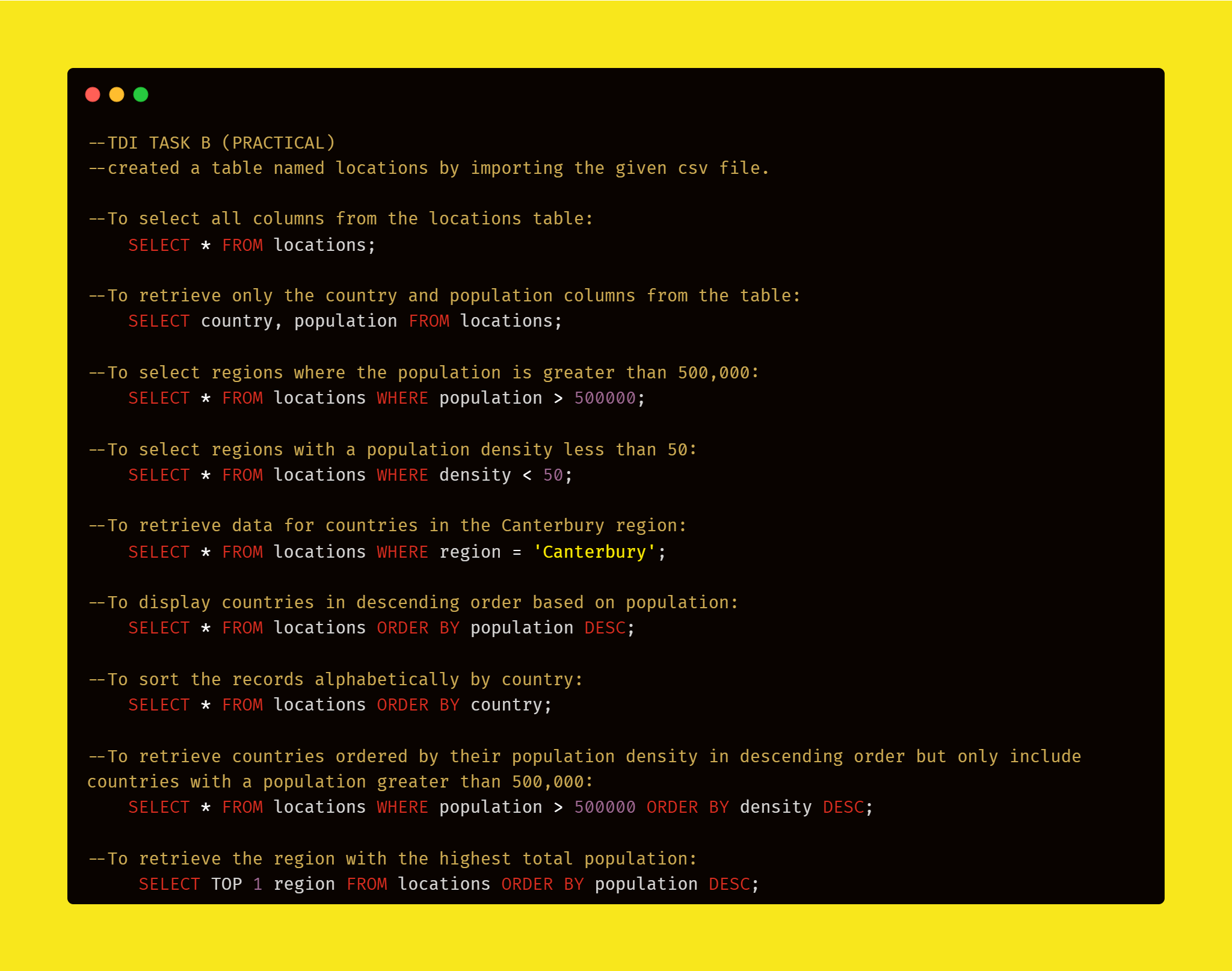
In the world of data analysis, writing effective SQL queries is essential for extracting valuable insights from databases. Whether you are a beginner just dipping your toes into data manipulation or a seasoned professional dealing with complex datasets, mastering the art of SQL can significantly enhance your productivity and analytical capabilities. This blog post will guide you through the do's and don'ts of crafting effective SQL queries, ensuring that you avoid common pitfalls while adhering to best practices that elevate your querying skills.
Another crucial aspect of SQL is the structuring of your queries, which greatly impacts their readability for other analysts. A well-structured query not only facilitates easier understanding but also fosters collaboration within teams. Additionally, navigating complex queries can often feel overwhelming. This post will provide valuable tips tailored for both newcomers and experienced users alike, equipping you with the tools needed to tackle intricate SQL challenges with confidence. Join us as we explore these vital elements of effective SQL query writing.
Do's and don'ts of writing effective SQL queries
When writing effective SQL queries, adhering to best practices can significantly enhance both performance and maintainability. First, always use clear and descriptive names for your tables and columns. This decision aids anyone who reads your query in understanding its purpose quickly. Be mindful not to use asterisks (*) in your SELECT statements; instead, specify the required columns explicitly. This practice not only helps improve query performance but also makes it clear what data is being retrieved. Additionally, make sure to use meaningful comments to explain complex sections of your query, as this will help future analysts easily grasp your logic.
On the flip side, avoid writing overly complex queries that are difficult to read and understand. Steer clear of deep nesting in subqueries, as this can obscure the intent of your SQL statements. Moreover, resist the temptation to write multiple JOINs without proper conditions; this may lead to unintuitive results. Don't neglect to index your tables appropriately, as failing to do so can cause performance issues when dealing with large datasets. Lastly, maintain consistency in formatting; for example, always use uppercase for SQL keywords. This consistency not only increases readability but also signifies professionalism in your coding style.
Structuring SQL queries for improved readability
To create SQL queries that are easy to read and understand, it's essential to use consistent formatting and naming conventions. Start each new clause on a new line, which helps distinguish the different parts of the query. For instance, place SELECT, FROM, WHERE, JOIN, and other clauses on separate lines. Use indentation to visually separate nested queries or complex conditions. Additionally, consider using uppercase for SQL keywords (like SELECT, FROM, WHERE) and lowercase for column and table names. This practice can make the SQL code look cleaner and easier to skim.
Another key aspect of structuring your SQL queries is to comment your code appropriately. Adding comments can provide context about why certain decisions were made, especially in complex queries. Use single-line comments (-- Your comment here) or block comments (/* Your comment here */) to explain non-obvious logic or temporary workarounds. Moreover, carefully naming tables and columns can greatly enhance readability; descriptive names reduce ambiguity and help other analysts quickly grasp the purpose of each element in the query. By adhering to these guidelines, you create a maintainable codebase that fosters collaboration and minimizes confusion among team members.
Navigating complex queries: Tips for beginners and professionals
When dealing with complex SQL queries, beginners must familiarize themselves with the foundational concepts of SQL. Start by breaking down intricate queries into smaller, manageable components. This approach not only simplifies the debugging process but also enhances comprehension of how various clauses interact. Use clear and meaningful aliases for tables and columns to improve clarity. Additionally, beginners should practice writing subqueries and common table expressions (CTEs) as they help structure complex logic in a more readable format. Keeping it simple and error-free is essential for both skill development and successful query execution.
For professionals facing intricate SQL challenges, advanced techniques can streamline the navigation of complex queries. Utilize query optimization tips like indexing and proper join techniques to enhance performance while maintaining readability. Consider employing formatted SQL editor tools that allow you to easily visualize query structures, making it easier to spot potential issues. Moreover, commenting within your code can provide context for your logic, aiding both your future self and other analysts who may work with the queries later. By prioritizing clarity and efficiency, professionals can tackle complex SQL challenges confidently while laying the groundwork for collaborative success within their teams.